Are DVRs still relevant?
We look at the latest DVRs to see whether they're capable of reinvigorating interest
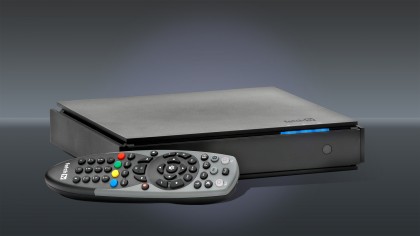
Are DVRs still relevant?
There was a time not so long ago, when DVRs – Digital Video Recorders, the digital replacement for VCRs that were also known as PVRs (Personal Video Recorders) – were considered a standard piece of equipment in the home theatre. However, their relevance has slowly been eroding and they are now – more often than not – an extra feature bolted onto general purpose video players.
And I'm cool with that. Ever since pay TV providers started integrating digital recording into their set top boxes, there's been little need for consumers to go and buy their own unit.
Indeed, with the latest version of Foxtel's IQ set top box (IQ3), with its ability to – in addition to recording your chosen content – stream the entirety of some series, browse recently aired programs, rent movies and TV shows, offer suggestions based on viewing habits, be controlled from your mobile, and more, there is seemingly no reason for Foxtel subscribers to buy a DVR.
Those jealous of these features, but not interested in subscribing to Foxtel, will be happy to know that many DVRs out there now provide much more than just the ability to record free to air (FTA) TV.
Indeed, companies including Samsung, Panasonic, and others are releasing new digital video recorders that act more like a video hub than just a recorder.
With features like internet apps, streaming of your recorded programs to mobile or local devices, playback from USB and network storage, mirroring your mobile device's screen, web-browsing, as well as Blu-ray playback and, of course, recording free-to-air TV, perhaps there is still room in the A/V cabinet for one of these units.

DVRs
But let's first talk about that feature that gives these units their name: recording video. Which begs the question: why would you want to record things off of TV in the age of the internet?
A few reasons: often there's an obscure movie screening on late night TV that you love but that isn't on Netflix or as a torrent; you may want to record your mum on Masterchef (although, in terms of posterity, a DVR isn't the best place to store these things); perhaps you never get around to watching stuff before it's removed from iView; or you just want to skip all the ads.
If any of these reasons appeal to you, let's start examining what you can expect from a current-gen DVR.
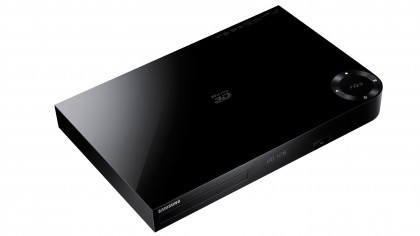
Recording TV
As a short primer, you'll see DVRs listed as having a number of tuners built in – these are the number of TV stations that it can record or watch from.
So, a DVR with a single tuner allows you to record something, but not change the channel while it's recording. A DVR with dual tuners allows you to record one channel while watching (or recording) another, and one with three tuners allows you to record two different channels while watching (or recording) another.
However, there is a further complication here that is worthy of explanation: subchannels.
In order for a network to get more content (and therefore advertisements) out onto their allocated radio frequency, it's become common practice for broadcasters the world over to create 'subchannels' that pack several TV channels into the bandwidth allocated for one (this is done by compressing the signals and multiplexing them to broadcast together – which is why there is only limited HD broadcasts over the air; they just won't fit).
Pretty much every 'extra' channel that has been launched by a network in Australia – such as 7mate, GEM, One etc. – is actually a subchannel.
What this means for DVRs is that you can record all of a station's subchannels using only a single tuner. This gives you a theoretical maximum recording capability of 8 different programs using only a dual tuner device, as there are as many as four subchannels on a single DTV channel.
In most use cases, though, you're not going to be wanting to record programs exclusively on a single network, so a dual tuner device only reliably allows you to record two programs at once, so don't fall for the marketing hyperbole.
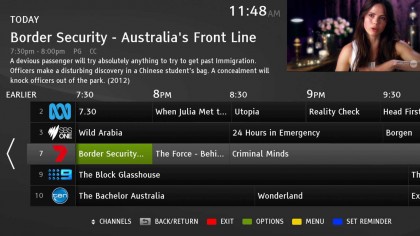
Streaming video
Another feature that's becoming standard on DVRs is the addition of HbbTV (Hybrid Broadcast Broadband TV aka 'FreeViewPlus' in Australia), which sucks down content via your broadband connection as well as from normal DTV broadcasts.
It basically rolls all the 'catch up' services together into a unified Electronic Program Guide (EPG) – which is very handy when you're searching for a specific show but can't remember what network it aired on, or are browsing for content of a chosen genre.
Of course, FreeViewPlus isn't the only net-enabled function seen in DVRs these days: many of them also plug into streaming services (Netflix is the most common, but there are also some IPTV providers), or allow you to create your own by sending your recorded content to your mobile device.
Indeed, the existence of Netflix calls into question the worth of recording anything, but as any Netflix subscriber knows, the extent of their content is not yet exhaustive – as mentioned earlier, sometimes the only way to get a copy of a movie is to wait for it to air on late-night TV.
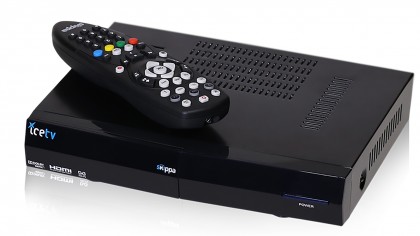
Special functions
There are also DVRs available on the market that offer several specialty features, such as automatically removing ads, sharing your recorded content around the house or to your mobile, or tapping into IPTV sources.
The one you've probably heard of is Fetch TV, which is offered as a package with a DVR from several popular ISPs, or purchased outright (with an additional subscription service) from Harvey Norman, Domayne, and Joyce Mayne. The subscription service gets you tiered access to different TV channels, but you can use the box without a monthly fee as a DVR and Netflix/web-app streamer.
Another specialty DVR is the 'Skippa' offered by IceTV, which launched in May this year. The Skippa – as the name implies – has some built-in smarts that will automatically skip any ad breaks during your recorded content.
As mentioned, it uses IceTV's constantly updated (but subscriber only) EPG and smart recording app to make sure that your recordings are made accurately, no matter if their time slot changes. The app (Android, iOS, and Windows Phone) allows you to set series or one off recording events from your phone, no matter where in the (internet connected) world you are.
Also worth considering is the HDHomeRun DVR or HDHomeRun Connect. The DVR is a specialty DVR that had a Kickstarter Project earlier this year, while the Connect has already launched.
What HDHomeRun does differently is that it shares TV across the house using IP – that is, your home network – which means you only require a single aerial, and it allows you to watch Live (or recorded) TV on your computers, consoles, or mobile devices. Admittedly, this is handier in the US where you are allowed to use third-party cable receivers (one of which HDHomeRun also offers as a way to share pay TV around the house), but it's still an interesting product.
You plug the HDHomeRun Connect into your aerial socket and home network (a wired network connection if you want HD), and it'll then give you a DLNA/UPnP compatible stream to connect to. If you have a HTPC or use DVR software such as Windows Media Center, Elgato EyeTV, or Myth TV etc., then you can even control the stream from there.
The DVR expands on this further and allows you to record TV to a NAS (network attached storage) device or to your PC using the HDHomeRun software. It's sort of like a no-fuss alternative to setting up your own HTPC.
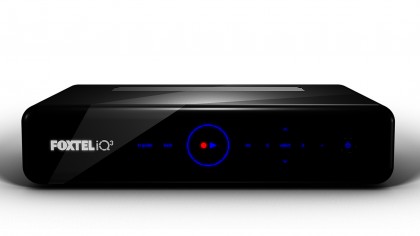
Final thought
With the all the extras now tacked on to DVRs – such as Blu-ray, DVD, USB, and network playback, web apps, and remote streaming – DVRs have kept up with changed TV viewing habits by morphing from a single purpose device, to more of a media hub.
However, most of the extra features seen in current-gen DVRs are also available on cheaper Blu-Ray players that forego the inclusion of a DVR. It's up to you, as a TV consumer, to decide if the premium price of DVR capabilities is worth increase in purchase price. And, if you subscribe to Foxtel and have IQ3, it probably isn't.